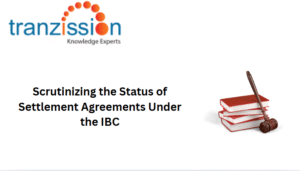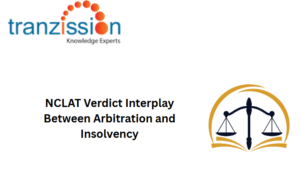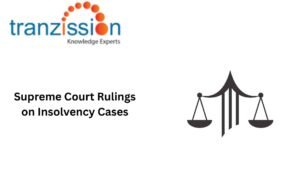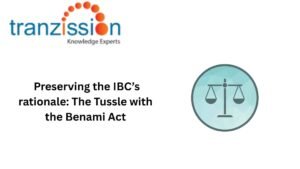
Rights of secured creditors in relation to repayment plan

Table of Contents
The Insolvency and Bankruptcy Code, 2016 (“the IBC”) offers a comprehensive framework to deal with the challenges of insolvency and liquidation. The primary goal of the IBC is to achieve a balanced interest between the parties that are participating in the bankruptcy resolution process and Rights of secured creditors. In the process of liquidation, those companies and secured creditors who have issued loans that are backed up with security interests have a considerable stake in the liquidation proceedings. The IBC has implemented strong measures to protect the rights of the secured creditors to ensure they get their payments on time and are fair during liquidation.
Understanding Section 110 of IBC, 2016
Purpose of Section 110:
Section 110 defines how secured creditors can exercise their rights when a repayment plan is proposed during the insolvency resolution process. Hence, it ensures fair treatment of secured creditors while balancing the interests of all stakeholders. This section provides a clear mechanism for secured creditors to approve, reject, or negotiate repayment plans.
Legal Text of Section 110:
This section outlines the rights of secured creditors in relation to repayment plans, but with the stipulation that voting on the repayment plan means forfeiting their rights to enforce security during the repayment period.
Rights of Secured Creditors Under Section 110
Right to Enforce Security Separately:
Secured creditors are not bound to the repayment plan if they choose to enforce their security outside the insolvency proceedings, thereby they can recover dues through asset liquidation, Securitisation and Reconstruction of Financial Assets and Enforcement of Security Interest (SARFAESI) Act proceedings, or other legal means.
Right to Participate in the Repayment Plan:
If a secured creditor opts to be part of the repayment plan, they must abide by its terms once approved. This participation in the plan allows for structured repayment over time instead of immediate enforcement.
Right to Priority Repayment:
Under section 53 of the IBC, secured creditors have a higher priority over unsecured creditors in terms of repayment distribution, ensuring that their claims are settled before unsecured creditors receive any payments.
Right to Object to the Repayment Plan:
Secured creditors can reject or challenge the repayment plan if it does not adequately protect their interests. If the repayment plan is unfavorable, secured creditors can exercise their independent rights over collateral assets.
Read more :Role of ESG in Corporate Governance
Key Provisions and Practical Implications for Secured Creditors
Who Are Secured Creditors Under IBC?
Under section 3(30), “secured creditor” means a creditor in favour of whom a security interest is created, and “security interest” is defined as a right or claim to property to secure payment, as per section 3(31). Such creditors have specific rights, including the ability to participate in the corporate insolvency resolution process (CIRP), enforce their security interests, and potentially realise their security interests in the liquidation process, as outlined in sections 110 and 52.
Enforcement vs. Participation – A Critical Decision for Secured Creditors:
During CIRP, a moratorium is declared, which prevents secured creditors from enforcing their security interests against the corporate debtor, including actions under the SARFAESI Act. The rights of secured creditors are restored only after the commencement of liquidation proceedings. Thus, a faster recovery process is provided under the IBC, but may be subject to legal challenges and requires secured creditors to initiate separate legal actions.
Participating in Repayment Plan:
The IBC offers a structured framework for resolving insolvency, potentially leading to faster recoveries and reducing litigation costs, but it can also result in longer recovery periods for creditors.
Role of Insolvency Professionals Under Section 110
Insolvency professionals play a crucial role in ensuring fair and unbiased resolution of insolvency cases, particularly concerning secured creditors’ rights regarding repayment plans. In addressing the rights of secured creditors during insolvency proceedings, professionals face challenges in balancing the interests of different creditor classes, ensuring fair treatment, and navigating complex legal frameworks, which can lead to disputes and delays.
Conclusion
Section 110 of the IBC is important because it outlines the rights of secured creditors during the insolvency resolution process, allowing them to participate and vote in creditor meetings. However, there is a condition that doing so means they forfeit their right to enforce their security during the repayment plan period. Insolvency professionals in their role as resolution professionals have a crucial part in facilitating the voting and participation of secured creditors in relation to repayment plans, ensuring a fair and transparent process.





